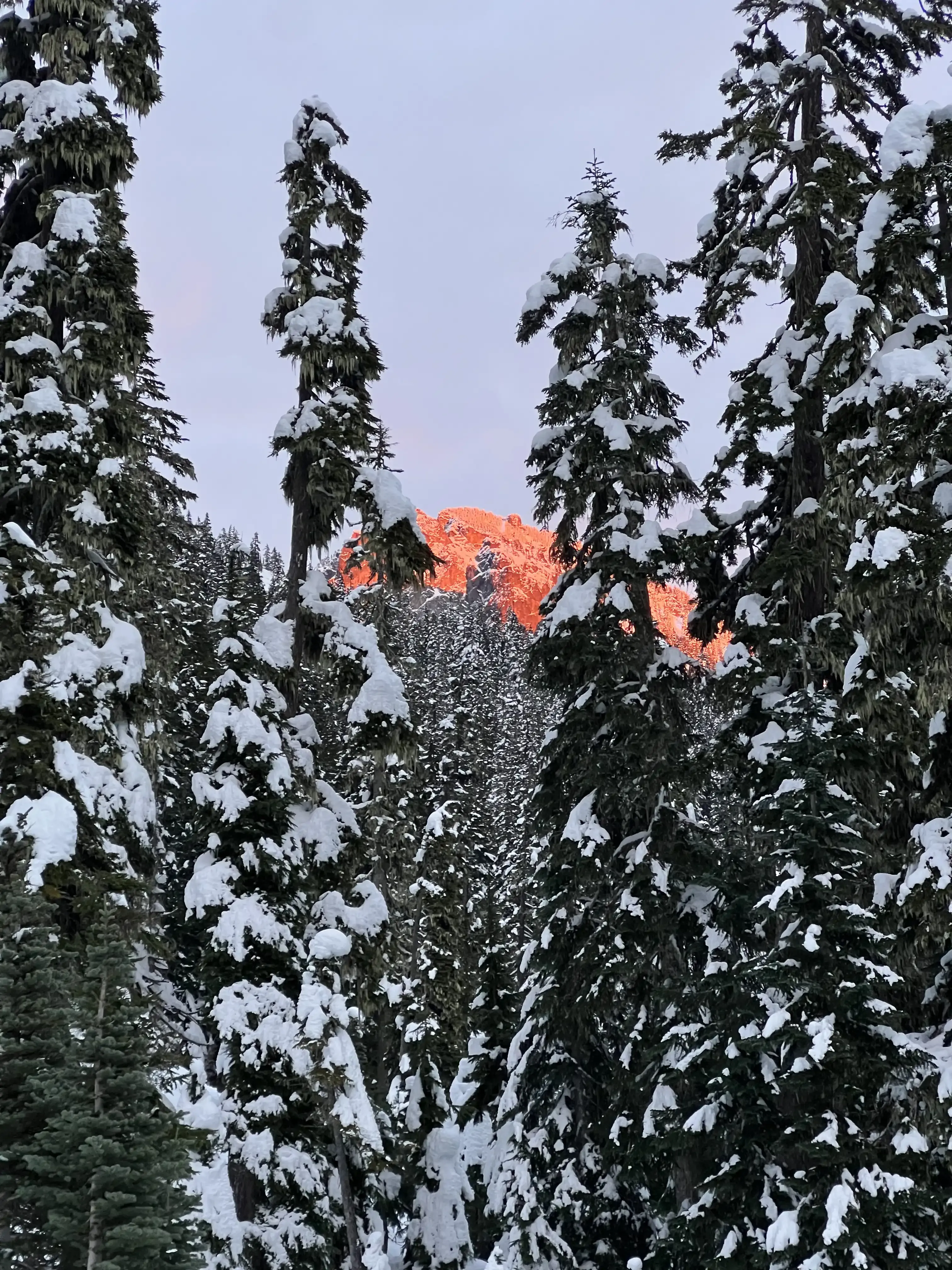Early-Season Assessments of the Snoqualmie Pass Snowpack
Published on: Mon Dec 02
Welp, it’s snowy alright. But what is happening in the snowpack and how will this affect back country travelers in the 2024-2025 season?
Written by Tom Skoog

Snoqualmie Pass is my favorite place for backcountry skiing and ski mountaineering. While I’ve had some incredible days on larger and more “fearsome” mountains, the combination of proximity to home, stellar terrain, and overall kookiness makes Snoqualmie Pass hard to beat. The last time I spent any real time at the Pass, there wasn’t any snow! Let’s get some more traffic on the SW Rib of Guye!
All that aside, I, like many people, have been eagerly waiting for snowfall, so I was thrilled to see a strong start to the season. Despite reports that most areas were in a state of “low tide” (read: bushes in your face, rocks under your skis), I clicked into the old skinny skis for several consecutive days in late November and early December to see what was going on in my favorite area. Here are some early season observations.
Navigating the Low Tide
First of all, yes, you need to swim through some low tides to access enough snow for consistent skiing. There are many exposed logs, barely covered rocks, branches ready to spring out of the snow like booby traps, and creeks rushing as though it was spring. But rather than deter you, I’d argue that these challenges should entice you (a topic for another blog post). They should, however, impact your route selection.
For many popular backcountry destinations in Washington, there is one approach route favored by mid-season backcountry travelers and another used primarily by hikers in the spring and summer. Although the backcountry routes are usually more direct, they are also not maintained in any way and can be quite difficult to move through when coverage is thin. For this reason, I generally accessed areas at the Pass via the summertime Snow Lake or PCT inlet trails. These weren’t without their own challenges but they were overall a more straightforward way to access “the goods.” See below for a video of my friend Lee displaying some textbook “sneaking” technique.
The Payoff
After an upfront payment in sweat, the conditions improve tremendously. Although coverage is thin at 3,000 feet, the snow depth improves to about a meter to a meter and a half at 4,000 feet, and by the time you’re at 5,000 feet, there is over two meters of snow! That’s an impressive total for November!
Not only is there a lot of snow, but the snowpack structure is relatively simple and solid [photo credit: NWAC]. The primary feature is the 11/24 crust, which I found buried 10–30 cm deep, depending on elevation, and more pronounced on southerly aspects. Snowpack tests revealed well-bonded layers, with no significant signs of instability after several mild days without new snow.
During my travels, I noticed sun crusts forming on solar aspects under scattered clouds and clear skies, but thankfully, there was no evidence of surface hoar ahead of the next storm cycle. This combination of depth and snowpack stability creates excellent, relatively safe riding conditions on shady, northerly slopes above 4,000 feet.
Well, what are you waiting for? Get out and do it!
The Real Reward
The real reason to venture out early in the season isn’t just the skiing—it’s the lack of pressure. Sure, I kicked a few rocks and got intimate with some tree branches, but none of that mattered. On the same days that I was pulling on trees for upward progress and making creek crossings that would make my old man cringe, I was spending quality time with friends, new and old, brushing off the rust from summer, and finding adventure in small moments. I witnessed pink skies, clouds flowing like water, and the namesake for this website: alpenglow, all while spending time with some of my best friends in this world. You could say that all of this stuff about early season snowpack observation… was just a good excuse.

Stay safe out there.
- Tom